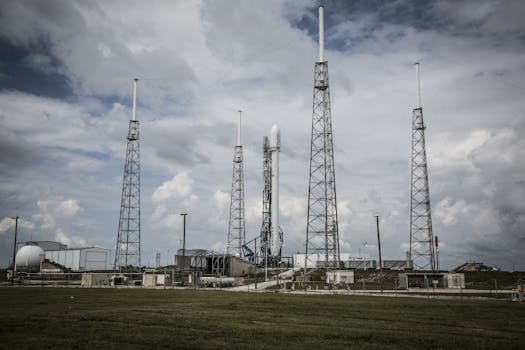Harnessing the Skies: New Technologies Transforming Satellite Communications
The satellite communications industry is undergoing a significant transformation with the advent of new technologies. This article explores the latest developments and innovations in satellite communications, including advancements in satellite design, launch technologies, and signal processing.

Harnessing the Skies: New Technologies Transforming Satellite Communications
Harnessing the Skies: New Technologies Transforming Satellite Communications is revolutionizing the way we communicate and access information. The satellite communications industry is undergoing a significant transformation with the advent of new technologies. These innovations are enabling faster, more reliable, and more secure communication services, and are opening up new opportunities for industries such as telecommunications, navigation, and remote sensing.
The development of new satellite technologies is driven by the growing demand for global connectivity and the need for more efficient and cost-effective communication systems. Next-generation satellites are being designed to provide higher bandwidth, greater flexibility, and improved signal quality. For example, the use of advanced materials and manufacturing techniques is enabling the production of lighter and more efficient satellites, which can be launched at lower costs and with greater reliability.
Advancements in Satellite Design
One of the key areas of innovation in satellite communications is in the design of the satellites themselves. New satellite designs are being developed to provide greater flexibility, scalability, and performance. For example, the use of software-defined satellites is enabling the creation of satellites that can be reconfigured in orbit, allowing for greater flexibility and adaptability. Additionally, the development of satellite constellations is providing global coverage and enabling the creation of new communication services such as satellite-based internet and IoT connectivity.
Another area of innovation is in the development of new propulsion systems, such as electric propulsion and advanced ion engines. These systems are enabling satellites to maneuver more efficiently and to maintain their position in orbit with greater precision. This is particularly important for satellites that require high levels of accuracy, such as those used for navigation and remote sensing.
Launch Technologies and Signal Processing
The development of new launch technologies is also transforming the satellite communications industry. Reusable rockets, such as those developed by SpaceX and Blue Origin, are reducing the cost of access to space and enabling more frequent launches. This is opening up new opportunities for satellite operators and is enabling the creation of new satellite constellations and communication services.
Advances in signal processing are also playing a critical role in the development of new satellite communication systems. The use of advanced signal processing techniques, such as beamforming and interference mitigation, is enabling the creation of higher-capacity communication systems and is improving the performance and reliability of satellite communication services.
Applications and Future Directions
The new technologies transforming satellite communications have a wide range of applications and are opening up new opportunities for industries such as telecommunications, navigation, and remote sensing. For example, satellite-based internet services are providing connectivity to remote and underserved communities, and are enabling the creation of new applications such as IoT connectivity and smart cities.
In conclusion, Harnessing the Skies: New Technologies Transforming Satellite Communications is driving innovation and transformation in the satellite communications industry. The development of new satellite technologies, launch systems, and signal processing techniques is enabling the creation of faster, more reliable, and more secure communication services, and is opening up new opportunities for industries and applications around the world.
